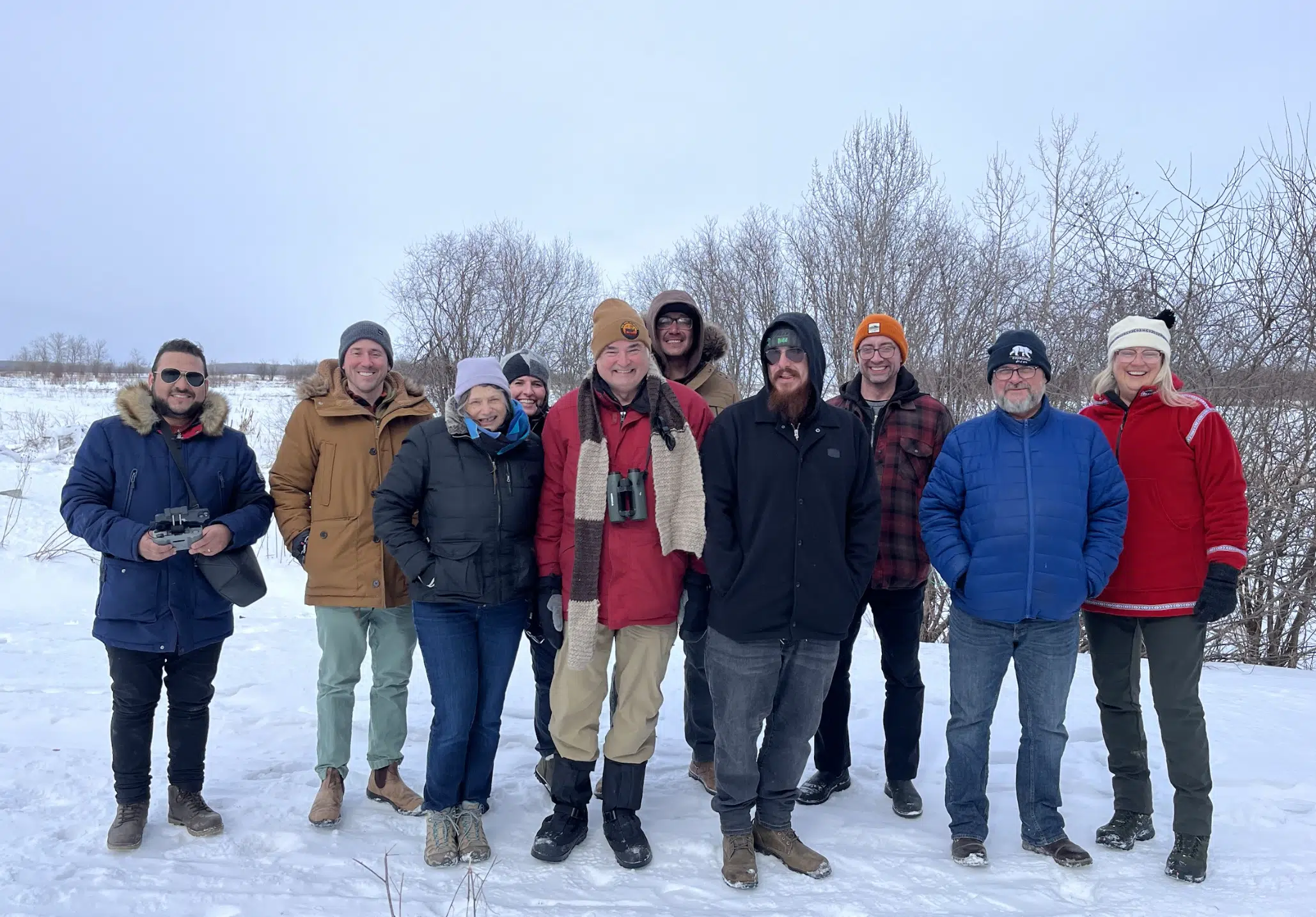
By Mira Oberman
Director of Communications and Public Programs, CPAWS Manitoba
Two wildlife audio recorders were set up in Fisher River Cree Nation (FRCN) as part of a project to study how birds migrate through, breed, and live in the southeastern Interlake.
The recordings of birdsongs and calls may also be used as part of the land-based learning curriculum. More recorders will be hung on trees in the community in the weeks to come.
Chief David Crate and Lands Governance Director Cliff Kirkness met with representatives of the National Audubon Society and the Manitoba Chapter of the Canadian Parks and Wilderness Society (CPAWS Manitoba) to discuss the birdsong recording project and other potential collaborations on March 26, 2024.
“It was a pleasure to meet with Audubon and CPAWS today,” said Chief Crate. “We are open to working with conservation groups as part of our efforts to protect all species of birds and animals and their habitats for future generations.”
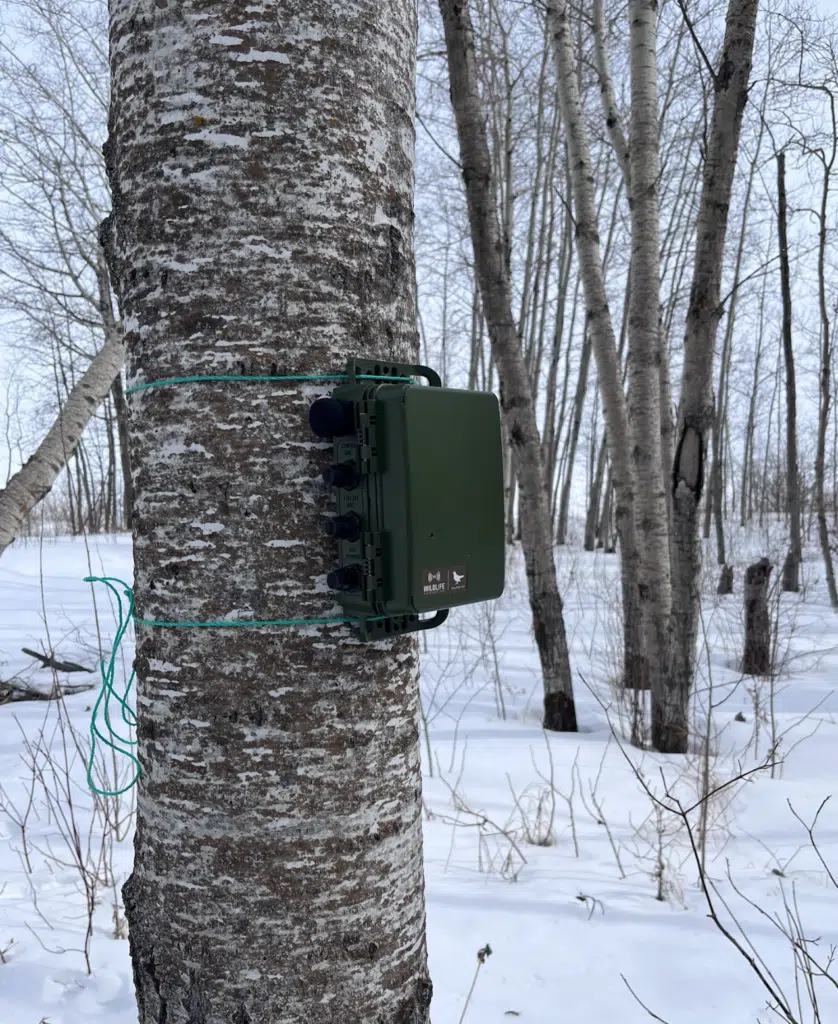
This is the first time that FRCN has collaborated with Audubon. The US environmental non-profit best known for bird conservation has also offered to fund up to two youth to work with Lands Governance this summer as interns.
“Some of the birds I enjoy hearing in my backyard in Maine migrate through your territory,” said Dr. Jeff Wells, Vice President for Boreal Conservation at the National Audubon Society. “Birds are an incredible way to see how we are all connected, and how our actions impact people far, far away. We are grateful for the leadership demonstrated by Fisher River Cree Nation in stewarding these lands and waters.”

Longtime FRCN partner in conservation CPAWS Manitoba introduced Audubon to the Nation. “Fisher River Cree Nation and CPAWS permanently protected 841 square kilometers of habitat in 2011 when Fisher Bay Provincial Park was established after many years of work,” said Ron Thiessen, Executive Director of CPAWS Manitoba.
“We are working with FRCN to preserve far more of its traditional territory through the FRCN Conservation Areas Initiative. The bird recorders will provide information that will inform the project.
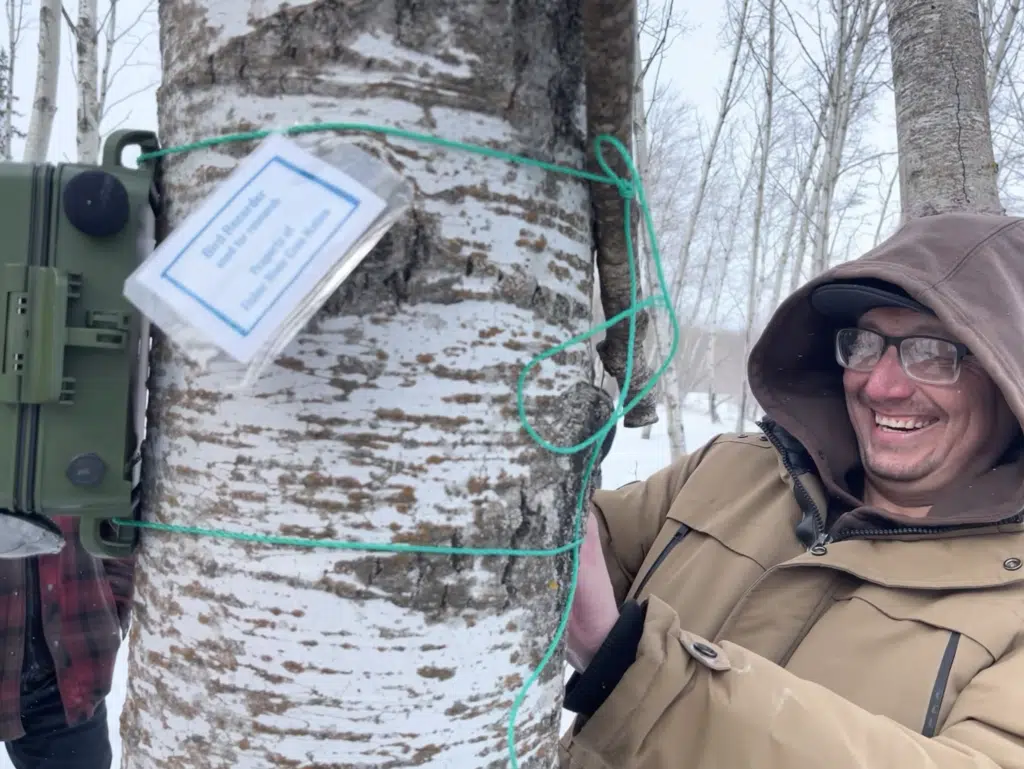
Photo Credit Mira Oberman, CPAWS Manitoba.
The Interlake is an important pathway for tens of thousands of birds like sandhill cranes, bald eagles, piping plovers and golden-winged warblers which migrate from as far away as South America and the Caribbean.
It is also home to year-round species like woodpeckers, chickadees, sparrows and the white-breasted Nuthatch.
“The birdsong recorders provided by Audubon and the data they receive now belong to Fisher River Cree Nation,” Dr. Wells said.
“If you want Audubon to analyze it, we can produce reports showing what species are there. If they’re migrating, we can see when they’re arriving and departing. If they’re breeding, we can see if they nested because they’d be there for a long time,” Dr. Wells said over lunch at King Ho Chinese Food.
“It’s up to Fisher River Cree Nation to decide how to use the results. It can remain confidential, or we can produce public reports like what we’ve done with Poplar River First Nation and what we’re currently working on with the Seal River Watershed Alliance.”
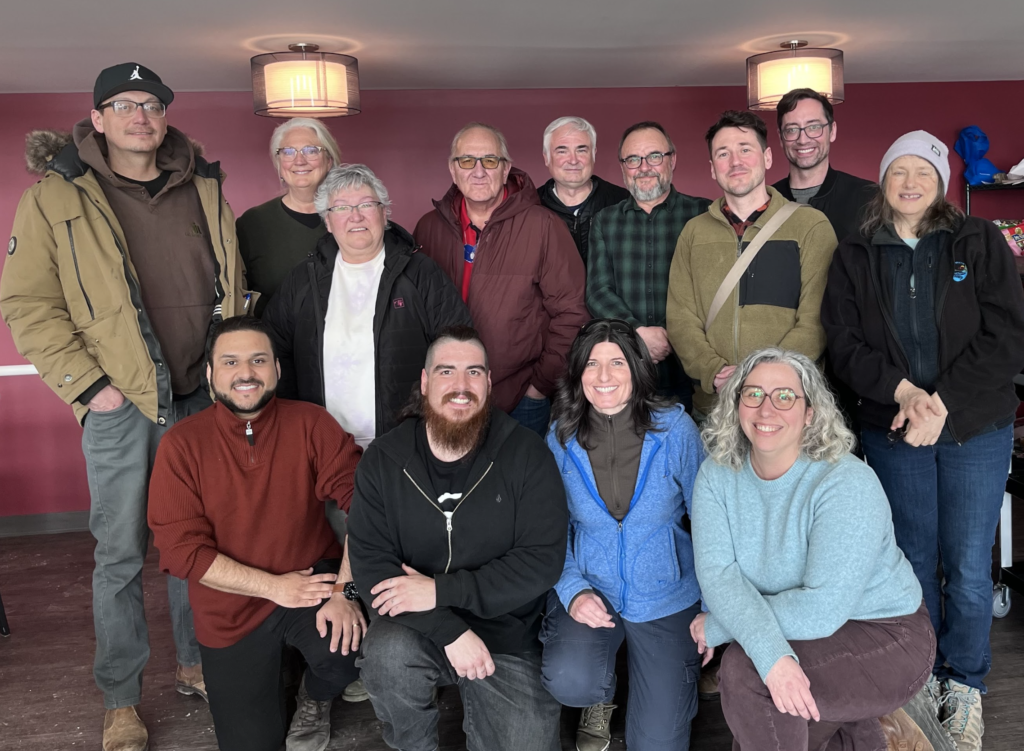
The green recorders —known as autonomous recording units or ARUs— were tied to a tree at the youth cabin and a tree near the old rice paddy.
They are set to automatically record sound for the hour before and the hour after dawn and dusk. This captures the songs and calls of birds which are active in the morning and those which are active in the evening. The sounds are stored on an SD card in the device, which can operate for months on just four AA batteries.
The American visitors were also shown the solar farm and the cottage development as part of their tour of the community.
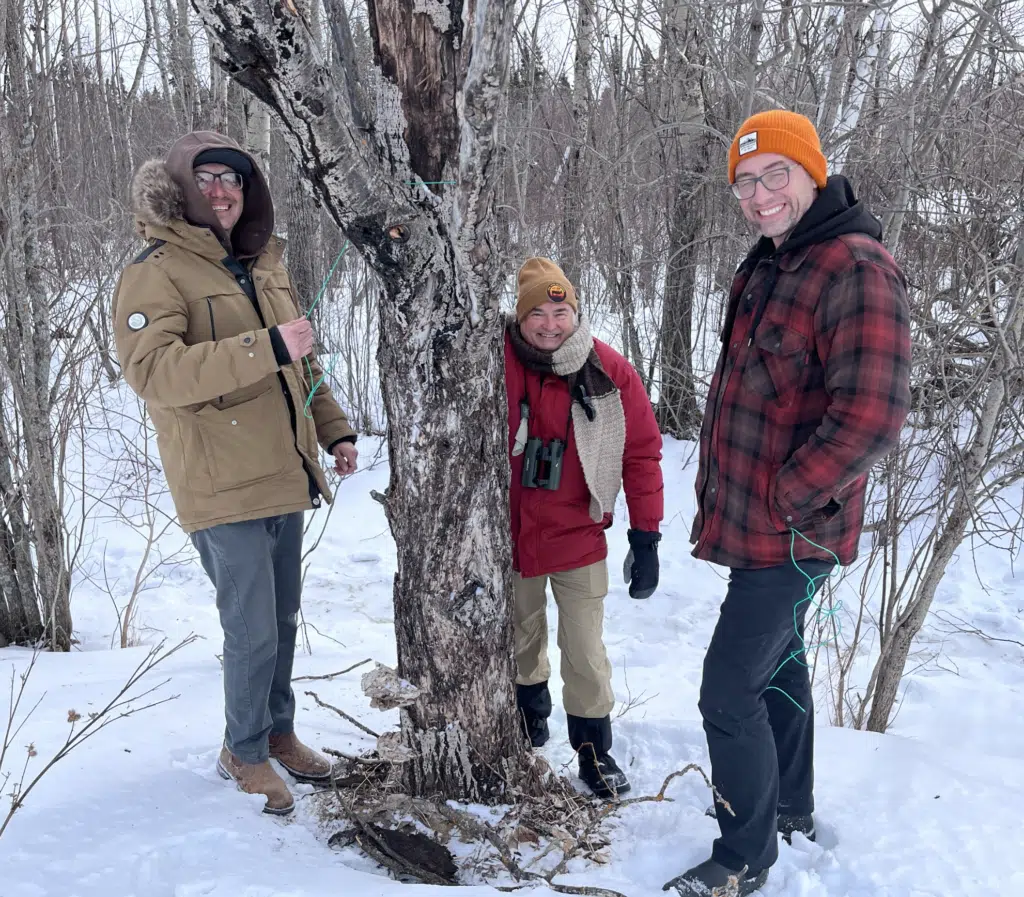
For more than a century, the National Audubon Society has preserved bird habitats, conducted scientific research, influenced policymakers to enact commonsense conservation laws, and engaged communities across the hemisphere to protect the natural resources upon which birds—and we—depend. Audubon is working to halt, and ultimately reverse, the decline of birds across the Americas. More information is available at the National Audubon Society website.
CPAWS Manitoba is an environmental non-profit which has partnered with FRCN on conservation initiatives since 2006.
Our work together led to the establishment of the Fisher Bay Provincial Park in 2011. While we were pleased with the new park, we knew the job of creating a healthy balance of nature conservation and sustainable developments in Manitoba’s southeastern Interlake region wasn’t done yet.
As such, the Fisher River Cree Nation Conservation Areas Initiative was born. FRCN is leading the effort and neighbouring Peguis First Nation and CPAWS Manitoba are partners. The initiative has the support of the province of Manitoba and the government of Canada. More information is available on the Fisher River Cree Nation Conservation Areas Initiative website.
– Thanks in part to the National Audubon Society for making this blog possible. CPAWS greatly appreciates its support of our boreal conservation efforts in Manitoba –
